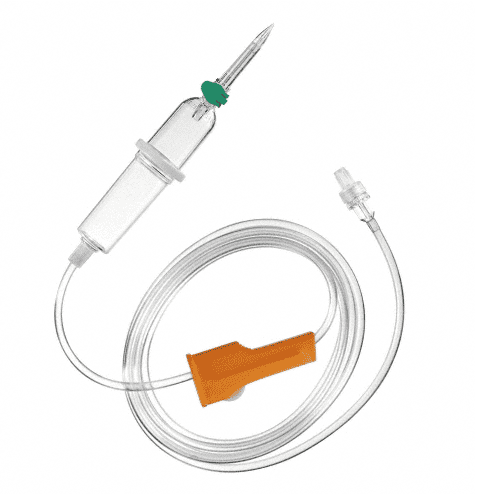Non-toxic stabilizers medical equipment transparent tube injector
Product Description
Calcium Zinc (CaZn) non-toxic PVC Stabilizers used in hundreds of medical products and devices with more applications continually being developed. Made from PVC can be formulated with excellent transparency to allow for continual monitoring of fluid flow. Not only does PVC offer the flexibility for application but also for strength, health standards, durability and even under temperatures and conditions. On the other hand, PVC stabilizers plays a big role in containing rising health care cost.
Properties
Non-toxic stabilizer,no harmful heavy metals ,replace traditional stabilizer,safety and sanitation,good for environment protection
Excellent initial coloration and good long-term stability;
Both toughening and promoting melting, plasticizing fluidity is good, no plate out;
It has excellent thermal stability and lubricity, has light stabilization effect, excellent weather resistance, can appropriately reduce the dosage of titanium dioxide; resistant to sulfide pollution, can improve the outdoor use effect of products;
Dispersibility, good anti-deformation, improve the color and firmness of the product, and improve the appearance of the product;
It has a unique coupling function, which imparts good dispersibility to the filler, enhances the wrapping with the resin, improves the performance of the product, reduces mechanical wear and prolongs the service life of the device;
It can enhance the melt strength, promote foaming, and make the cells uniform and fine. The surface of the product is flat, the color is stable, the color deviation is small, and the production cost can be reduced.
Advantages
Low ash content
fa-check-circle
Good heat stability
Odorless, No phenol
Non-Toxic, odorless & environmentally friendly
No atomization & no plate out
Low content of readily oxidizable substance
Advantages
Suit for rigid environmental foaming PVC products , such as wallboard and sheet and windows with blinds .Through SGS test,meets RoHS,EN71,EN1122,EPA 3050B, FDA 21CFR .172 888 series standard in the world.
1.Suggested formula
|
Raw materia l |
PVC |
5143 |
Impact Modifier | Foamin g agent | ACR | Foaming regulator |
Calcium carbonat e |
Lubrican ts | pigment |
| dosage | 100 | 4-6 |
0-6 |
0.5-1.5 | 0.5-2 | 6-12 | 20-80 | 1-2 | suitable |
2.Suggested process
A->Mixing process data:
Heat temperature:100-110℃ Cold temperature:40-50℃
B->Extrusion process:
| Screw cylinder1 zone | Screw cylinder2 zone | Screw cylinder3 zone | Screw cylinder4 zone | Confluent core | Mold head | Mouth mold |
| 160-165 | 160-165 | 170-175 | 170-175 | 170-180 | 195-200 | 200-210 |
About PVC
PVC is widely used in medical applications today because it’s impermeable to germs, is easily cleaned and provides single-use applications that reduce infections in healthcare.
PVC has been used in the medical realm for more than 50 years. It was first developed to make flexible tubing and containers to replace the rubber and glass that had previously been used for applications in healthcare. PVC can also be joined together with high frequency welding thus allowing for a wide variety of container shapes and numerous types of attachments. Commercially available PVC is highly branched and has low crystallinity. Containers made of this type of PVC have better strength, superior characteristics and better surface strength.

PVC also offer the flexibility necessary for applications such as blood bags and IV containers, but it can also be relied upon for its strength and durability, even under changing temperatures and conditions. PVC can also be easily extruded to make IV tubing, thermoformed to make ‘blister’ packaging or blow molding to make hollow rigid containers. This versatility is a major reason why PVC is the material of choice for medical product and packaging designers.






